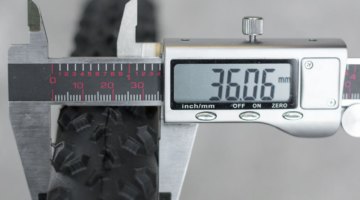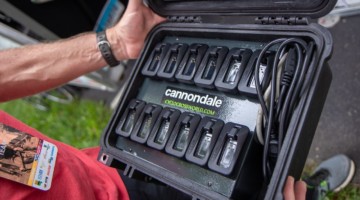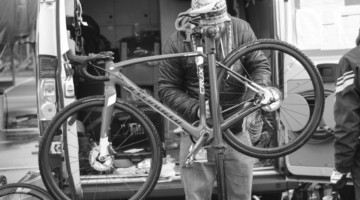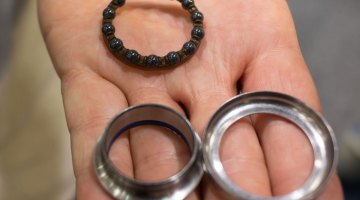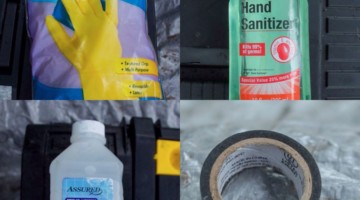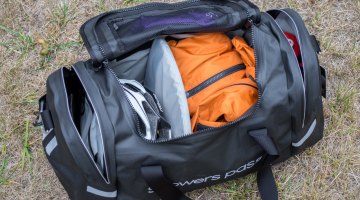Oostmalle is in the books, and with that, the UCI season is over for the year. Though late season ’cross races and now gravel races are popping up, it seems like your cyclocross bike may never get a real off-season. Some of you even swap ’cross tires for road tires and race road all summer on your bike! But that’s no excuse for sloppy care-taking. Check out some of our articles on the care and keeping of your bikes in the off-season, from maintenance to storage:
Off-Season Storage and Maintenance
Here are a few things you can do to ensure it’ll be ready to roll when the time comes. First thing’s first: clean your bike. Before you hang it up, clean it well and give it a good inspection as outlined in the Mechanical Mondays post on tips for Daily Maintenance Inspection.
Once the bike has been cleaned, dried, and inspected, it’s time to get down to the nitty gritty. The level of detail depends greatly on your mechanical fortitude. If you have the trust in your abilities and the right tools for the job, strip the bike to the frame and then clean and inspect everything. Remove the brakes, stem, front fork, crank, and bottom bracket. As you pull each piece, inspect it, clean it (including the BB shell), lube, and reassemble. Take note of suspect parts like headset bearings and bottom brackets as you go and replace as necessary or keep a detailed list of problems that you’ll need to address before the start of the next season. If parts are worn, it’s a good time to think about upgrades.
Mechanical Monday: Prepping Your Tubulars for Off-Season Storage
Just like good wine, your expensive cyclocross tubulars require a little care and proper storage. “Ridden hard and put away wet” should never be how you describe your equipment at season end. Here are a few tips to help you summer-izeyour cyclocross tubulars.
WASH
Wash your wheelset using water with dish soap or diluted Simple Green. Avoid harsh scrubbing of the delicate sidewalls with a stiff-bristled brush. Instead, use a sponge or softer brush. Stiff bristles are OK for the treads.
Thoroughly dry the wheels by hand with a clean towel and let air dry completely. Tip the wheel on its side and tilt slightly one way then the other to let any water trapped in the rim drain.
But my Bearings are Sealed!
It’s that time of year again. Time for the post-cyclocross blues to set in for some, though others may be happy that the past month of mud, snow, ice and sub-freezing temps are gone. Regardless of which side of the fence you’re on, don’t just hang the bike(s) up and leave them “to dry” for the next few months. Just like you, they need lots of off-season love before getting back to the job that they were made to do. Even if you’re not of the cyclocross persuasion, your bike could probably do with a little bit of love if you’ve been riding throughout the winter in any sort of place that deals with snow and ice and all the deterrents your local Dept of Transportation slings over the roadways to make them rideable … er … driveable.
Unless you’re a pro and your bike gets loved on every single day by a pro mechanic, before and after you ride it, this is for you. At least once a year, and definitely post-cyclocross season, I recommend that my clients have their bikes torn down to the frame, components broken down to bare minimum, cleaned, rebuilt and if needed, replaced.
And maybe use this as a chance to stock up for next season…
What Amateur Mechanics Should Have in Their Toolboxes
The tools listed below are those I believe are a good start for anyone at home on a budget and new to cycling. One thing to remember to is to keep a running “grocery list” of the tools you want, and keep it around. Mark off items as you procure them.
- Floor Pump: One of the most overlooked of tools out there. There’s no substitute for a good pump. You’ll work less and your tires will fill in half the time compared to using a hand/frame pump.
- Metric Allen Wrenches: Get a full size range, from 1mm-10mm. For basic use, the standard “L-bend” wrenches are great. You can buy as a set, which will save you money compared to buying individually.
Any off-season storage or maintenance tips? Let us know in the comments!
























